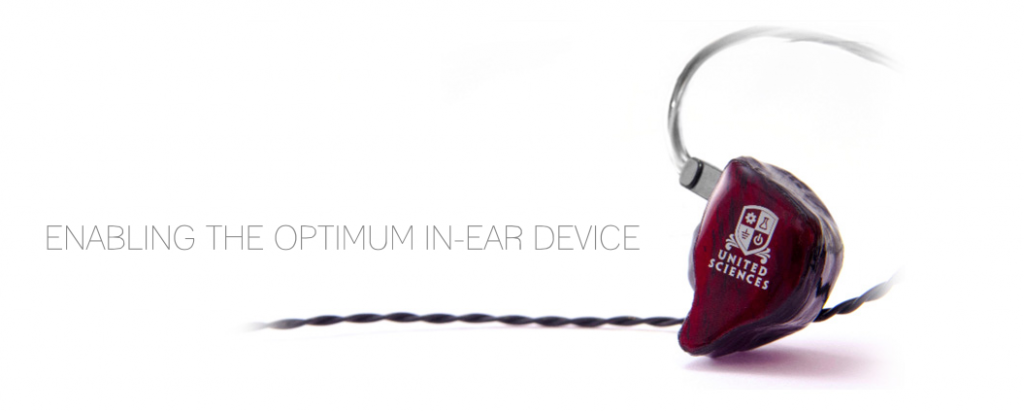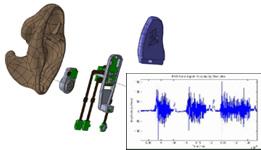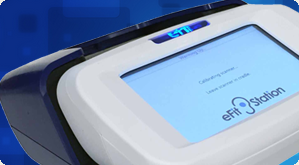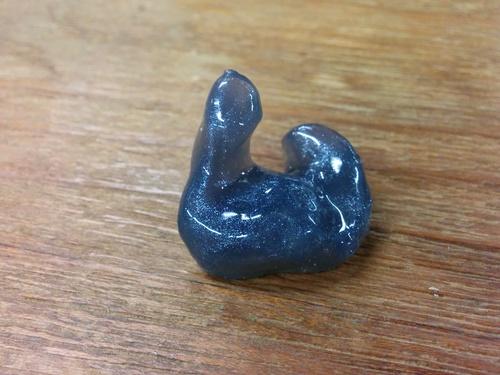The hearing aid industry has been using 3D printing to create hearing aids for about a decade now. United Sciences has upped the ante and created a 3D inner ear scanner to create a 3D mold of an individual’s ear and ear canal in order to create perfectly fit in ear devices ranging from ear buds to noise cancelling devices. The handheld scanner is the only mobile scanning technology that can obtain 3D measurements of the inner ear in real time.
United Sciences, based in Atlanta, specializes in 3D hole scanning solutions for targeted industries and has been showcasing their latest technological development at CES 2015 in Las Vegas this week. While there, they are offering the opportunity for people to experience having their ear scanned, a process which takes only a few minutes to complete.
 The eFit scanner is “shown” the location of the ear and then uses bursts of light to map the surface of the inner ear. The visual interface shows the user a model of the inner ear as it is being created, letting them know if there are spots or spaces where data has not been gathered. The process is somewhat akin to painting with a sprayer as the operator uses the light emitted to cover the surface of the inner ear completely.
The eFit scanner is “shown” the location of the ear and then uses bursts of light to map the surface of the inner ear. The visual interface shows the user a model of the inner ear as it is being created, letting them know if there are spots or spaces where data has not been gathered. The process is somewhat akin to painting with a sprayer as the operator uses the light emitted to cover the surface of the inner ear completely.
Once the data is captured through the scanner, it is sent to print, in this case on four MakerBot Replicator Minis. Printing the mold on several printers at once reduces the production time from four hours, typical of an industrial 3D printer, to approximately 20 minutes. The assembly portion of the process takes another 30 minutes. With such a compressed creation time and the smaller scale of the production equipment, this becomes a process that could really be undertaken on-site in any store.
The advantage of having a mold made to fit a specific individual’s ear is not only in the added comfort and ease of fit for in-ear devices but also because the electronics can be placed in the devices in such a way as to provide the highest fidelity possible and to allow for the use of biometric sensors.
The CEO of United Sciences, Sam Kellett Jr., explained his vision for the possibilities offered through this innovative technology:
“We are excited to debut this revolutionary scanning technology which we feel holds great promise for becoming the industry standard which will enable the next generation of in-ear devices. The precise dimensions captured by our scanner will forever replace the need for silicone impressions and give users a product with fit, comfort and effectiveness never before possible.”
What do you think about this application of 3D scanning technology? Join the discussion at the United Sciences eFit Inner Ear 3D Scanner forum thread over at 3DPB.com.
Subscribe to Our Email Newsletter
Stay up-to-date on all the latest news from the 3D printing industry and receive information and offers from third party vendors.
You May Also Like
Precision at the Microscale: UK Researchers Advance Medical Devices with BMF’s 3D Printing Tech
University of Nottingham researchers are using Boston Micro Fabrication‘s (BMF) 3D printing technology to develop medical devices that improve compatibility with human tissue. Funded by a UK grant, this project...
3D Printing Webinar and Event Roundup: April 21, 2024
It’s another busy week of webinars and events, starting with Hannover Messe in Germany and continuing with Metalcasting Congress, Chinaplas, TechBlick’s Innovation Festival, and more. Stratasys continues its advanced training...
3D Printing Webinar and Event Roundup: March 17, 2024
It’s another busy week of webinars and events, including SALMED 2024 and AM Forum in Berlin. Stratasys continues its in-person training and is offering two webinars, ASTM is holding a...
3D Printed Micro Antenna is 15% Smaller and 6X Lighter
Horizon Microtechnologies has achieved success in creating a high-frequency D-Band horn antenna through micro 3D printing. However, this achievement did not rely solely on 3D printing; it involved a combination...






























